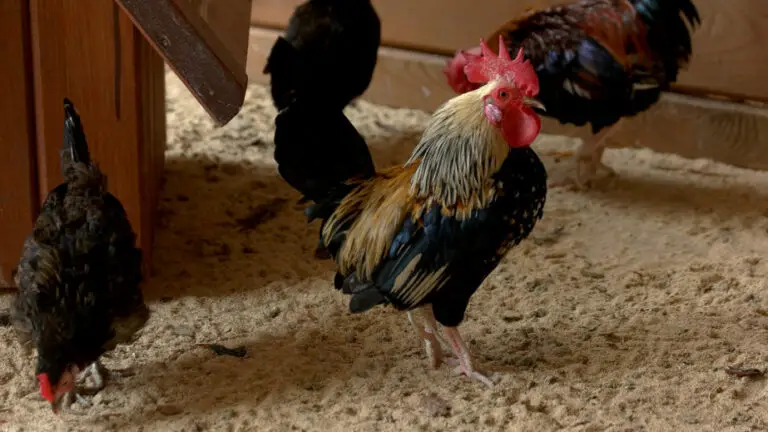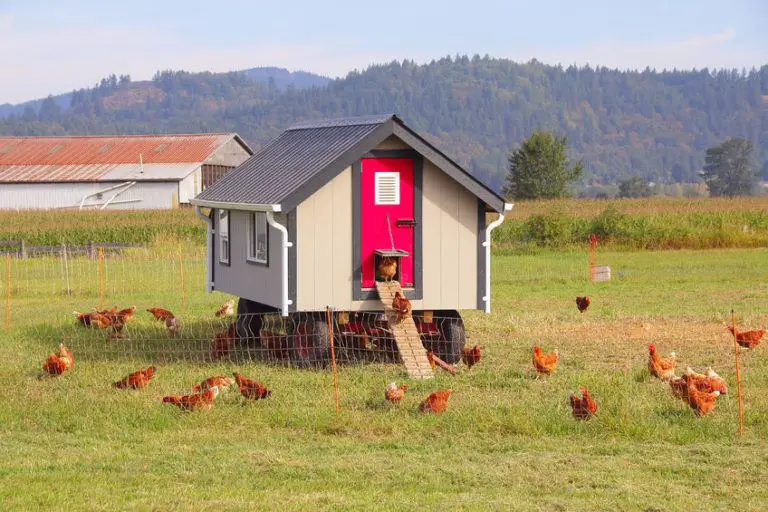Chicken Coop Door Latch – Which Ones To Use And Why
Few things are more terrifying for a chicken farmer than the thought of a creeping creature crawling to their coop in the wee hours of the night, searching for a fast and free feast. Even worse is the resulting carnage that many coop owners wake up to find the following day.
Unfortunately, this situation is more common for hen handlers than any of us would like to admit. The problem is, not all chicken coop doors are properly secured against the starved scavengers that greedily sniff them out.
Luckily, this is an easily preventable tragedy, and the solution is quite simple: a chicken coop door latch can easily and effectively do the trick. The best part is that many are cheap and easy to install, so you can quickly ensure the safety of your friendly flock and rest easily at night knowing that your hens are safe from the predators lurking out there in the dark.
If you’re in the planning phase of building a chicken coop, consider a few design ideas here.

Predators To Watch Out For
Before you can effectively defend your coop from the forces of evil that attempt to breach it, you have to know what exactly you are defending your flock from.
While there are several natural predators to chickens, perhaps the most dangerous of these is the raccoon. They are known both to dig and climb to get into coops, but these instances can be easily avoided by elevating your coop and installing a roof. However, their main mode of stealing their supper is far more sinister and advanced, and serves as a vivid reminder of the need for adequate door latches on chicken coops.
Clever and conniving as they are, raccoons often use their opposable thumbs to simply lift latches, gain access to a coop, and wreak havoc on your flock.
It is crucial to understand what types of latches serve as adequate protection against these attacks, and which latches you should avoid when looking to defend your coop.
More on raccoons can be found on Wikipedia.
Other Critters To Watch Out For
Depending on where you live, we also included a few other animals to who would love to eat chicken dinner! Although they are not as likely to enter your coop as a raccoon, they could easily find their way in if your door latches fail.
- Fox
- Coyote
- Birds of Prey – Owls, Hawks, Eagles
- Possum
- Rat
- Snakes
- Dog
- Bear
- Cougar
Lack-Luster Latches
While there are wide varieties of latches of different styles, strengths, and applications available to choose from, there are a few that you should consider avoiding when selecting the best type of protection for your coop.

Hook and Eye Lock
The most common (and perhaps most basic) style of lock that is surprisingly widely applied to chicken coop doors in the simple hook-and-eye lock. It is imperative to avoid these when selecting the right lock for your coop! Raccoons can deftly undo these and other one-step locks, and thus gain access to your precious hens’ sanctuary.
These types of locks include both vertical and horizontal latches; a raccoon will be able to undo the lock regardless of its orientation. Instead, it is best to avoid the use of hook-and-eye latches for your chicken coop doors in favor of some of more advanced pieces of equipment that are sure to keep your flock happy and out of harm’s way.
Secure Latch Options
Given the number of predators that prowl around coops, and the threat that an unsecured or poorly secured door poses for your chickens at the hands of a ravenous raccoon, secure chicken coop door latches are an essential part of every chicken farmer’s safety system.
Carabiner
The best way to prevent raccoons from sneakily undoing the latch and infiltrating your coop is to use a latch system that requires multiple movements to unlock. The most popular two-step system includes applying a carabiner clip to the door latch. This addition requires not only the opening of the carabiner but the simultaneous removal of it from the latch in order to access the latch itself.
 Screw Link
Screw Link
Another popular option is securing a screw link to the latch, as it requires several twisting motions in order to be removed from the door. Both of these options present locks that are too complex for raccoons to undo, and thus are a sure way of preventing a predatory breach of your coop.

Padlocks
However, if you are still doubtful of your flock’s safety even with these additions, many farmers upgrade to padlocks on their door latches to provide the utmost level of security for their chickens.
In general, any two-step latch system will be sufficient in preventing a raccoon from unlocking and accessing your coop, but spring locks and barrel-style locks are always a fool-proof way to keep your hens safe and secure in the face of ruthless predators.
Coop Doors That Need Solid Latches
Some chicken coop designs have several doors on them. Listed below are some of the most common.
Main Door
Placing your latch far enough up on the door may prevent some predators from gaining access. But it never hurts to err on the side of safety and make sure you have a solid latch installed.
Pop Hole Door
In case you’re not familiar, the pop hole door is the door where your chickens enter in and out of the coop. Some coop owners opt for an automatic pop hole door which can be configured to open and close automatically. However, if you don’t have one of these fancy additions, no problem! A pop hole door can be secured with a good latch system every night to keep your flock safe from animals.
Run Door
If you have a run attached to your coop, it will likely have its own entrance. Like the main door, the run door should also be shut securely with a quality latch.
Nest Box Door
If your coop has an accessible egg compartment on the side of the coop, you’re lucky – those are very convenient! However, it also means it will have a latch that should be properly secured. If not, raccoons or other predators may be crafty enough to make their way inside.
Closing “Clucks”
We hope you’ve learned about the importance of quality latches for protecting your feathered friends.
In summary, for added safety (and peace of mind), you’ll want to consider a chicken coop door latch that will stand up to the most conniving of critters. These would include a carabiner, screw link or, if you’re serious, a padlock.
We haven’t listed all the best latches available here by any stretch. While searching online or in your local hardware store, examine the latch or lock design to see if it could withstand or outsmart even the wiliest of predators before making your selection.
Happy Chickening!
Like this post? Pin it









